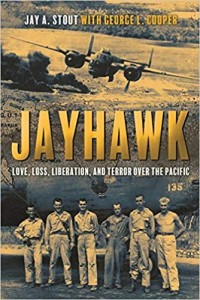 We review Jay A. Stout’s latest historical novel, Jayhawk: Love, Loss, Liberation and Terror over the Pacific. If you’re a fan of compelling historical narratives that combine accurate historical details, plus insights into the Pacific Ocean Theater of WWII bomber campaign, and would like to learn from first-hand accounts of what it must have been like to fly and fight at tree-top height over the mountainous terrain and steamy jungles of the Philippine Islands, read on.
We review Jay A. Stout’s latest historical novel, Jayhawk: Love, Loss, Liberation and Terror over the Pacific. If you’re a fan of compelling historical narratives that combine accurate historical details, plus insights into the Pacific Ocean Theater of WWII bomber campaign, and would like to learn from first-hand accounts of what it must have been like to fly and fight at tree-top height over the mountainous terrain and steamy jungles of the Philippine Islands, read on.Military History
Military History
| The Dude |
|
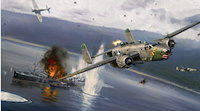 Armed to the teeth with machine guns and a 75mm cannon, B-25s played a key role in World War II as low-level bombers and strafers.
Armed to the teeth with machine guns and a 75mm cannon, B-25s played a key role in World War II as low-level bombers and strafers.
By Stephan Wilkinson @ History.net.com
The North American B-25 Mitchell was present for the overture of the Pacific War and was still onstage as the curtain fell on the final act. On April 18, 1942, 16 B-25Bs flew one of the first American offensive missions of the war—the famous “Thirty Seconds Over Tokyo” Doolittle Raid. On August 19, 1945, four B-25J gunships escorted a surrender-negotiation delegation aboard two Mitsubishi Betty bombers from Japan partway to Manila and back.
Military History
| Donster |
|
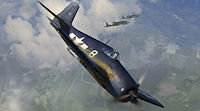 By Barrett Tillman @ Historynet.com
By Barrett Tillman @ Historynet.com
Four Grumman F6F-5 Hellcats swept in from the sea, hunting enemy aircraft attempting to get out from under the U.S. Navy’s aerial umbrella. Heading inland, the fighter leader spotted two twin-engine bombers bearing enemy markings on their wings. The setup was nearly ideal: The leader and his wingman nosed down, lined up the nearest target in their reflector gunsights and pressed the triggers on their stick grips. Motes of light played over the camouflaged bomber, which absorbed the full impact of 12 .50-caliber machine guns. It gushed smoke, descending rapidly and smashed into the ground.
Another successful shootdown in the Pacific? No, a Heinkel He-111 had just become the first German victim of Navy Hellcats over Europe.
Military History
| Donster |
|
 Outnumbered and outgunned, the Marine pilots of VMF-221 paid a heavy price for their heroic efforts to stem the Japanese onslaught on Midway Atoll.
Outnumbered and outgunned, the Marine pilots of VMF-221 paid a heavy price for their heroic efforts to stem the Japanese onslaught on Midway Atoll.
By Richard Camp @ Historynet.com
At 0555 hours on June 4, 1942, the heart-pounding wail of Midway atoll’s air raid siren sent the pilots of Marine Fighting Squadron 221 (VMF-221) scrambling to their aircraft. The island’s air defense radar had detected a swarm of Japanese aircraft—“Many planes, 93 miles, 310 degrees, altitude 11,000 feet”—heading their way, and no pilot wanted to be caught on the ground when they arrived.
Military History
| Donster |
|
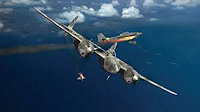 When American P-38s covering a British naval force in the Aegean Sea encountered a group of attacking German Ju-87s, a massacre ensued.
When American P-38s covering a British naval force in the Aegean Sea encountered a group of attacking German Ju-87s, a massacre ensued.
By Anthony Rogers @ Historynet.com
In October 1943 U.S. Lockheed P-38 Lightnings were briefly involved in an ambitious British operation in the Aegean Sea, providing cover for the Royal Navy, carrying out fighter sweeps and bombing enemy ground installations. Despite chalking up multiple victories during one of the most lopsided air actions of the war, no sooner had they made their presence felt, than the P-38s were withdrawn to continue operations over southern Europe.
Military History
| Donster |
|
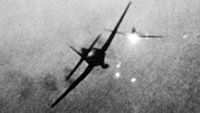 For the U.S. Navy aviators of Task Force 38, the air war over the pacific ran right to the limit
For the U.S. Navy aviators of Task Force 38, the air war over the pacific ran right to the limit
By David Sears @ Historynet.com
FROM HIS HELLCAT OVER coastal Honshū—the main Japanese home island—U.S. Navy Lieutenant (junior grade) Henry J. O’Meara marveled to see a Tokyo Plain “so thickly studded with airfields that 10 or a dozen were visible from almost any point.” O’Meara, 21, had experienced combat, but many of his fellow aviators in the aircraft carrier Yorktown’s Fighter Squadron 88 were getting not only their first glimpse of Japan’s heartland, but a first exposure to aerial warfare. After plastering enemy fields with tons of fragmentation bombs on July 10, 1945, O’Meara and mates were brimming with swagger. However, O’Meara wrote afterward, the fliers also were “quite disappointed over the lack of Jap planes in the air.”
Military History
| Donster |
|
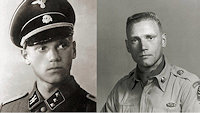 The fierce anti-communism of Finland’s Larry Thorne put him on different sides in two wars
The fierce anti-communism of Finland’s Larry Thorne put him on different sides in two wars
By David Kindy @ Vietnam Magazine
U.S. Army Capt. Larry Thorne had just arrived at the Chau Lang Special Forces camp in South Vietnam’s Mekong River Delta in early 1964. The Green Beret, a member of the 10th Special Forces Group (Airborne), reported for duty, stowed his gear and grabbed binoculars to study the terrain around the base. Thorne noticed something on a nearby hill: a Viet Cong flag blowing in the breeze above the dense tropical jungle. The captain set down his binoculars and called for volunteers to join him on a mission. The men silently crept around enemy positions to reach the VC site, where Thorne ripped down the flag and stuck it in his backpack. He would not allow the enemy to flagrantly display its colors in sight of his base.
That was pure Thorne (pronounced THOR-nee). A warrior in in the classic sense. He lived for battle and prepared endlessly for combat.
Military History
| Donster |
|
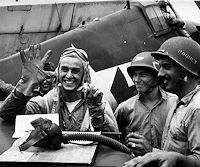 U.S. Navy fighter pilot Alex Vraciu downed 19 Japanese airplanes, but in the process lost three Hellcats, earning him a reputation as “Grumman’s best customer.”
U.S. Navy fighter pilot Alex Vraciu downed 19 Japanese airplanes, but in the process lost three Hellcats, earning him a reputation as “Grumman’s best customer.”
By Barrett Tillman @ Aviation History Magazine
Lieutenant (j.g.) Alexander Vraciu was one frustrated fighter pilot. On June 19, 1944—the biggest day of air combat in the Pacific War—his Grumman F6F-3 Hellcat struggled to keep pace with the rest of Fighter Squadron 16. The “Fighting Airedales” had scrambled from the aircraft carrier Lexington (CV-16) in response to the second Japanese attack of the morning against Task Force 58, whose 15 carriers outnumbered the nine Japanese flattops.
Vraciu was already a double ace with 12 victories, and he was positioned to increase his score in a sky full of targets. But his Pratt & Whitney engine was stuck in low blower, depriving him of maximum speed and climb. He watched in frustration as his squadron mates pulled away to intercept incoming enemy bombers.
Military History
| Donster |
|
 By Bob Gordon @ Military History Magazine
By Bob Gordon @ Military History Magazine
Just after dawn on Christmas Day 1941 wounded Canadian Pvt. Sid Vale lay in his bed in Hong Kong’s St. Stephen’s College, then in use as an Allied military field hospital. Immobilized by his injuries, he could only shudder at the screams of a nurse being raped by Japanese soldiers in the next room. Minutes earlier the invading soldiers had marched off two British medical officers—hospital commander Lt. Col. George Black and adjutant Captain Peter Witney—who had rushed to head off the Japanese beneath a Red Cross flag at the building entrance. The men’s bayoneted, mutilated corpses turned up the next day on the ground floor of the hospital. A third officer, Sgt. William Parkin, was shot as he sought to flee.
Surging into the first-floor ward, the intruders had summarily executed nearly two-dozen patients in their beds before gang raping four Chinese nurses, three of whom they later killed. Japanese soldiers then serially raped the remaining three nurses in another room. By the time the atrocities ended at St. Stephen’s that horrific Christmas morning, upward of 70 patients and staff members had been killed, several tortured beforehand. Many of the victims were Canadians, members of a 1,975-strong force hurriedly dispatched to bolster the Crown colony’s defenses. They had arrived less than a month before war broke out in the Pacific, and those who were not killed in the defense of Hong Kong were condemned to the living hell of Japanese prison camps.
Military History
| Donster |
|
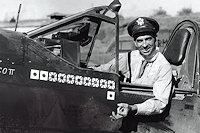 Son of the South Bob Scott was a rebel with a cause: helping the United States defeat the Japanese.
Son of the South Bob Scott was a rebel with a cause: helping the United States defeat the Japanese.
By Barrett Tillman @ Aviation History Magazine
In 1943 General Henry H. Arnold’s secretary buzzed his inner sanctum, informing the U.S. Army Air Forces chief, “Colonel Scott is here, sir.” “Hap” Arnold, who lived in a frequent boil, replied, “Oh, you mean God’s personal pilot?”
Colonel Robert L. Scott Jr., fighter ace and bestselling author of God Is My Co-pilot, was in trouble…again. He had just offered to strafe John L. Lewis, the mine workers’ union boss who had continually violated the wartime “no strike” pledge after Pearl Harbor. Called upon Arnold’s thick carpet, Scott said, “General, I was only expressing my personal opinion.”
Arnold came out of his chair, red-faced, finger jabbing. “Damn it, Scott! When you wear that uniform you don’t have a personal opinion!”
At McDill Field in Florida, Scott’s younger brother Roland was going through B-26 Marauder training. His copilot noted the news reports and said, “Well, your brother’s never going to be a general now!”
Long after, Bob Scott quipped, “I think that’s when General Arnold began looking for a way to send me back to combat where I could get killed.”
Combat pilot, bestselling author, big game hunter, versatile chef and incomparable raconteur—Scott was all those and more. Reared in Macon, Ga., he was also among the last cavaliers of the Old South. He made his final flight west from Georgia on February 27, 2006.
Military History
| Donster |
|

